Molly Larkin's Blog, page 11
February 17, 2016
The magic of a home altar
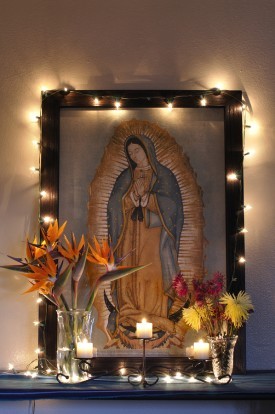
 Would you like to jump-start your meditation practice? Or have an instant dose of serenity? A home altar might be just the thing to help you.
Would you like to jump-start your meditation practice? Or have an instant dose of serenity? A home altar might be just the thing to help you.
Many people may think of altars as something only found in a church, but they don’t have to be limited to that.
The right “place” can make all the difference to what you want to do. How well could you work without an office? Or cook without a kitchen?
By the same token, we will benefit greatly from a designated place for our spiritual practice.
What is an altar?
Altars are built to hold focused energy, and help you to feel calm and centered when you approach them. It represents your intention to create more serenity, peace and love in your space and your life.
It can also be a place to reflect on your personal and spiritual goals, or to honor someone or some thing.
In Mexico, the Day of the Dead is celebrated with altars that hold flowers, photographs of deceased relatives and their favorite foods. It is a way of remembering and honoring them.
Every indigenous ceremony has an altar to honor the spiritual realm and the gifts of the Creator. The altar is the heart of the ceremony.
You can have more than one altar, in any room of the house, or even outdoors. I have an altar at my outdoor well to give thanks for the water that comes to my home from the earth. Any place where you want to be reminded to stop, reflect, breathe and be grateful is appropriate.
I think the bathroom is an excellent place for an altar for water. Think about it: water is the first thing we use in the morning and the last thing we use at night. Being able to turn a handle and have water [either hot or cold] pour forth is like a miracle to many people in the world. Be grateful for it!
The bathroom is also the place where we cleanse ourselves, maintain our health, and rid ourselves of toxins and negative energies. It’s one of the most important rooms in the house, so it might be good to honor it as such.
“Think of an altar as a physical manifestation of your inner spiritual landscape. Artfully laden with images and objects that remind you of your own best self, an altar gives you the opportunity to consciously reflect on things you might otherwise take for granted. It’s a place of solace and repose that becomes a receptacle for your spiritual energy. And when you sit before it, that energy is reflected back to you.” Lauren Ladoceour
Steps for creating an altar:
If you will be praying and/or meditating at your altar, select a location that will give you the privacy you need.
Identify the space and clear it of clutter and old energy: smudge with incense or sage.
Keep it simple and clean. This is where you will pray, meditate, and perhaps journal.
Select sacred items to place on it.
Things you might have on an altar:
Photos/statues of spiritual teachers or your loved ones who watch over you. Those who have the qualities you wish to emulate
Inspiring books/quotes
Crystals or special rocks
Plants or flowers
Candle
Incense
Anything else that is meaningful to you
How to maintain an altar
Renew your altar on every New Moon, as this is the time of new beginnings.
Clean it regularly. Don’t let it get dusty. An altar is a reflection of your life, so take good care of it.
How to use your altar
Pray or meditate at your altar daily, as this will help raise the energy there. In that way, each time you approach it, you will automatically tune into that place of serenity.
It can be an excellent practice to start and end your day there!
“Like a fireplace, the altar is a hearth to me. It’s where I go to kindle my soul and my connection to what is meaningful and inspiring.” Sean Johnson
Give it a try and let me know how it goes in the comments below!
February 3, 2016
Are you willing to do the work to change?

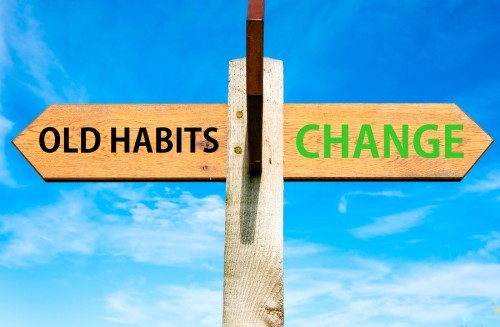
“If you always do what you’ve always done, you’ll always get what you’ve always got.” Henry Ford
In 2003 and 2013, seeking change in my life, I went to Brazil to see the medium Joao de Deus [John of God] at the Casa de Dom Ignacio de Loyola.
The Casa is a place where miraculous cures regularly occur. It’s also a place of kindness and acceptance of people from all over the world.
So I was surprised to read an interview with John of God in which, when asked what determines if a person gets cured, his answer was “merit.”
I had to think long and hard about that. Surely possible cures would not be intentionally withheld.
So my interpretation of “merit” was that the patients must do the work they need to do to achieve and maintain health:
take the herbs prescribed at the Casa,
follow the dietary guidelines,
follow a healthy lifestyle,
stop smoking,
stop destructive behavior,
continue healing treatments at home, etc.
Many oncologists agree that one reason cancer may come back is that patients, once in remission, don’t make lifestyle changes that will strengthen their immune system. So, in a nutshell, cancer may come back if you don’t do the work.
Or, people will attend a weekend workshop wanting a quick fix, or travel to Peru for instant enlightenment with ayahuasca, rather than commit to a daily spiritual / personal improvement practice at home.
I’ve been a spiritual seeker my entire life and I can assure you, there are no short cuts. We all have to do the work that will slowly and surely bring the change we seek.
The problem with meditation is…
Actually, there is no problem with meditation other than the fact that people simply don’t do it.
At some point, I ask most of my clients and students if they have a meditation practice.
I ask this because my experience, and the scientific research, shows that meditation is one of the best ways to become healthier, happier and more successful. And that’s just a partial list.
The answer I often get back is, “Well, I know I should, but….”
What is it that stops us from doing what we know will benefit us? That’s what I want to know.
I’ve taken a gazillion personal growth and spirituality seminars in the course of my life, and they’ve taught amazing techniques designed to help us. Yet, not everyone in the course goes home and starts practicing what they’ve learned.
Why is that?
“If you think you can, you can; if you think you can’t, you can’t. Either way you’re right.” Henry Ford
Perhaps it’s because we live in an “instant fix” culture – taking a pill is so much easier than starting a new habit, making a consistent change to our diets or incorporating exercise into our lives.
Or taking a few minutes to meditate, or just breathe. And I literally mean a few minutes.
Dreams versus actions
We all have dreams. But how many of us take the action steps necessary to make those dreams a reality?
Baby steps, just one at a time, can get us far.
Start small – so small that your brain can’t even come up with resistance. Sit down in the morning and do nothing other than breathe for one minute. That’s a great way to start a meditation practice. It’s not about the time you put in. It’s about consistency.
A good place to start is my book, The Fountain of Youth Is Just a Breath Away: Breathing Exercises for Relaxation, Health and Vitality
Remember that there are no “shoulds” – whatever works for you and will get you starting a good habit is what you “should” do.
Baby steps is much less intimidating than feeling challenged to find 15-20 minutes to fit meditation into your morning. Because you don’t need 15-20 minutes!
2-3 minutes will be a good start.
Here’s a way to break it down.
9 easy steps to starting a meditation practice :
Designate a good place to start meditating in your home. A “good place” will be according to your definition, not mine.
Clear the clutter from it.
Make an altar: put a candle, crystals, plant or flowers on it. Things that create beauty and good energy.
Buy a meditation pillow or select some pillows from around the house that will be comfortable to sit on. Or a comfortable chair. [There’s no rule that says you have to meditate sitting on a pillow or the floor].
Perhaps select peaceful music or a meditation CD to listen to and load them onto your mp3 or CD player. My meditation CD, Ancient Journeys, is available on my Books/Products page.
Get your family/housemates to agree to leave you alone for the few minutes you’re going to meditate each morning [or evening]
Turn off the phone and close the door.
Sit down for 2 minutes and breathe. [Feel free to gradually increase the time. It’s the formation of the habit that’s important, not how long you do it each time].
Repeat every day!
There. You’ve started your meditation practice.
If these 9 steps seem hard, you can hone it down to one step: sit down for 2 minutes and breathe. Easy and life-changing!
And now you’re doing the good work to bring change into your life.
“Diamonds are nothing more than chunks of coal that stuck to their jobs.”
Malcolm Forbes
January 20, 2016
Gay rights: let indigenous people lead the way

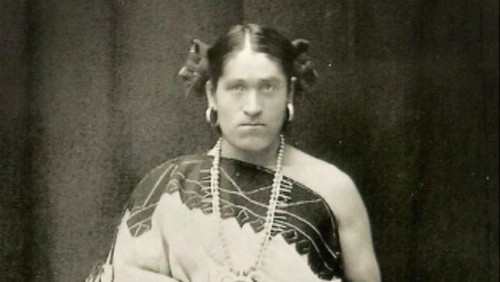 More and more, modern people are turning to indigenous teachings to learn a better way to live. Perhaps acceptance of gay rights could be the next lesson.
More and more, modern people are turning to indigenous teachings to learn a better way to live. Perhaps acceptance of gay rights could be the next lesson.
Here are a few things Native Americans have already contributed:
The Great Law of Peace of the Iroquois Nation was the model for the United States Constitution.
Native Americans were the original environmentalists. Care of the earth was so ingrained in their way of life that they didn’t even have a separate word for it.
In making decisions, Native peoples would first ask how it would affect their descendents 7 generations into the future.
Though they generally had separate roles, women were honored members of most tribes and could own property.
Healing the whole person, body, mind and spirit was how they approached illness.
The earth, and women, were viewed as sacred.
They taught acceptance instead of judgment.
Many Native American and First Nations cultures accepted gender variation. In fact, lesbians and homosexuals were often considered sacred.
Yet, in spite of the U.S. Supreme Court’s landmark 2015 ruling in Obergefell v. Hodges conferring the right to marry to same-sex couples, many in the United States still oppose same-sex unions.
We have so much to learn.
The Zuni Man-Woman
One of the best examples of the acceptance of sexual variance is the revered Zuni Man-Woman, We’Wha. [pronounced WAY-wa].
Born as a man, yet adopting women’s ways and dress, We’Wha was an honored member of the Zuni. He excelled at weaving and pottery, and was a recognized expert in Zuni religion. In 1886, he was sent to Washington, D.C. as a representative of the Zuni.
That We’wha became a representative of the Zuni tribe makes it clear that gender and sexual differences were well-accepted by the Zuni.
You can read more of We’Wha’s story in the book The Zuni Man-Woman [Paperback] [1992] Will Roscoe .
.
Prior to contact with European missionaries, most Native American tribes were very accepting of sexual variation. In fact, some considered there to be four sexes:
Men born as men and living as men
Women born as women and living as women
Men born as women but living as men
Women born as men but living as women
All were accepted and held a place of honor in their societies. Many tribes had their own terms for referring to them: for example, the Lakota [Sioux] referred to them as winkte; the Navajo used the term nádleehí.
In addition, prior to European contact, a multiple gender tradition existed among the Kanaka Maoli people’s of Hawaii; and the Incas worshipped a dual-gendered God.
Anthropologist Walter Williams notes that Christian missionaries outlawed Native American same-sex marriage in the 20th Century and actively sought to remove the practice.
Early anthropologists who observing Natives adopting the dress of the opposite sex used the word berdache [roughly translated to “kept boy”] to describe them. The term was derogatory, so in 1990 an indigenous lesbian gay gathering chose the term “Two Spirit” to replace berdache.
Many Native peoples have adopted the English term “Two Spirit” to describe the entire spectrum of gender and sexual expression.
Two Spirit refers to having both masculine and feminine housed in the same body. Prior to contact with Europeans, Two Spirits were respected and influential members of the community.
“They are usually regarded as having special sensory qualities: they see, hear, taste, smell and feel things others can’t. This is because the Two Spirit people are seen to be linked to their ancestral spirits. They interpret visions. They are peacemakers. They exist to honor all living things, past and present, as sacred.” Dr. Zuleyka Zevallos in “Rethinking Gender and Sexuality”, September 9, 2013
Not every tribe today embraces Two Spirits. In my experience, the greater the Christian influence on Native tribes, the less tolerance there is of sexual variation.
The “Two Spirits” documentary
The documentary “Two-Spirits” is the story of Navajo Fred Martinez, a nádleehí who was one of the youngest hate-crime victims in modern history, murdered at the age of 16 just for being who he was.
The Navajo used the word nádleehí to describe a male-bodied person with a feminine nature and, according to ancient Navajo culture, that was a special gift:
“The masculine and feminine together are sometimes reflected so completely in the body of one person it’s as if they have two spirits.”
The term nádleehí means “one who constantly transforms.”
“In Navajo teaching, in the old traditional world, there were four basic genders,” explains Wesley Thomas, Navajo scholar from Tsaile, Arizona, in the Two Spirits documentary.
“Women are the first gender, because Navajo is a matrilineal society. Men are the second gender; and the third gender is the nádleehí, who is born as a male person but functions in the role of a girl in early childhood and in the role of a woman in adulthood.
“And it’s just the opposite for the fourth gender, where they were born biologically female but functioned in the role of a boy in early childhood and matured into a man, and conduct their life in that gender identity.”
“I am proud to be Two Spirited, I am proud to be Native, and no one can change me nor the way Creator sent me to this world to be.” William Hawk.
Let’s hope that over time our modern culture will embrace this kind of acceptance.
Sources for this post:
http://othersociologist.com/2013/09/09/two-spirit-people/
http://everydayfeminism.com/2015/10/consider-two-spirit-identity/
http://thespiritscience.net/2016/01/06/breaking-the-gender-binary-the-navajo-had-four-genders/
http://thespiritscience.net/2016/01/06/breaking-the-gender-binary-the-navajo-had-four-genders/
http://disinfo.com/2013/03/third-fourth-and-fifth-genders-in-cultures-around-the-world/
http://plainshumanities.unl.edu/encyclopedia/doc/egp.gen.004
January 6, 2016
New year, new you?

There’s a lot of talk of “new year’s resolutions” these days. Probably because the new year seems a good time to create a “new you.”
What is a “new you?” That is a personal question that each must answer for themselves.
For me, it has to do with qualities of being rather than getting a new wardrobe or hairstyle. Those things have their place, but if you’re a reader of this blog, you probably want to look a little deeper at your life.
I always strive to be a better version of myself: less judgmental, more compassionate and forgiving, kinder, more nurturing. The list goes on.
One of my frequent prayers is for help in taking my spiritual work to the next level, and I think developing qualities like that are excellent hallmarks of a spiritual life.
Food for thought. But yes, I also want to lose the five pounds I gained over the holidays!
So now on to the practical tips for making change:
According to the experts, “resolutions” may not be the best way to accomplish a “new you.”
Research reveals that 36% of people making new year’s resolutions will break them by the end of January.
56% will give up by July.
Those aren’t very good odds. How do you beat them?
Perhaps “resolutions” are not the way to go. Maybe we should choose one goal or change at a time and make a plan for how to achieve it.
John Tierney, N.Y. Times science columnist and co-author of Willpower: Rediscovering the Greatest Human Strength , has weighed in on the topic:
, has weighed in on the topic:
He says that people too often overestimate their own willpower. The best strategy may be to do just do one thing at a time and then move on to the next.
That makes sense, because in the spiritual practice of manifestation, it’s recommended you work on just one goal at a time so that you don’t diffuse your energy.
Also, make clear, specific and measurable goals. “Lose weight” is rather vague, but losing one pound a week is specific, measurable and much more likely to be attained.
Instead of “save money,” be specific as to how much you will save each week.
Tierney explains that will power is a form of mental energy, and it depletes throughout the day when we make decisions. People with better self-control use less willpower – they rely on good habits instead.
Mark Zuckerberg and President Barack Obama try to avoid “decision fatigue” by wearing the same outfit every day to eliminate small, daily decisions about what to wear.
“I don’t want to make decisions about what I’m eating or wearing. Because I have too many other decisions to make.” President Obama said in 2012.
Eliminating small decisions leaves them with more energy, and more willpower, for the big stuff. Tierney says, “The most disciplined people actually use willpower less often than other people.”
Disciplined people also structure their lives to avoid temptation: they don’t keep bowls of candy on their desk, they don’t wake up and decide whether to work out. They’ve already made an appointment to work out with a friend so they have to show up – there’s no decision to be made.
It can also be helpful to defer decisions:
When faced with a bowl of candy, rather than tell yourself you can’t have any, tell yourself you can have some later. People who tell themselves, “I’m not going to have it now, but I can have it later,” do better at resisting temptation.
When the desert cart comes around say, “Just not tonight, maybe next time.”
If you don’t know where to begin with creating a “new you,” here are some ideas:
Declutter: pick a part of your home each week to tidy up and get rid of what no longer serves you. The new, empty space will seem like a breath of fresh air.
Throw out all your old makeup and get new, fresh makeup and colors.
Engage in self-care: commit to at least one thing each week that will make you feel good and help you de-stress: listen to a meditation CD, take a hot bath with candles and music, get a massage. The opportunities are endless.
When you don’t achieve a goal, re-evaluate. Was your goal too ambitious? Should you scale it down? What did you learn? How can you re-adjust your plan? Don’t judge yourself, simply adjust the goal or plan.
Celebrate your successes. Every single one. You deserve it.
Express gratitude. Make a list of everything you have to be grateful for. We often overlook the most basic things. I’ve recently been giving thanks for my appliances, indoor plumbing and hot and cold running water. Get creative with this but, above all, express gratitude.
Don’t watch the news in the morning. Focusing on the problems of the world is not the best way to start the day.
Know why you are pursuing a goal. Is it for you, [or for someone else]? Will it impact your health or happiness? You probably should be able to answer yes to both those questions if you want to find proper motivation. Reasons come first, results come afterwards.
“This is a new year. A new beginning. And things will change.” Taylor Swift
December 22, 2015
December 18, 2015
7 ways to celebrate the Winter Solstice

 “Winter Solstice is the time when light is born out of the womb of winter’s darkness.” Mara Freeman, in Kindling the Celtic Spirit: Ancient Traditions to Illumine Your Life Through the Seasons
“Winter Solstice is the time when light is born out of the womb of winter’s darkness.” Mara Freeman, in Kindling the Celtic Spirit: Ancient Traditions to Illumine Your Life Through the Seasons
To original peoples around the world the Winter Solstice is a time of great celebration. This year it takes place on December 21.
It signifies the return of the sun through longer days and shorter nights until the sun reaches its zenith at the Summer Solstice.
Many ancient cultures considered it to be the true beginning of the “new year.”
It’s something modern society takes for granted, and may not even notice. We always assume the sun will rise and set every day. But what if it didn’t?
What if it gave up because we never said, “Thank you!”
Many great spiritual teachers have said, “Why should the Creator give you more if you don’t express thanks for what you already have.”
A daily gratitude practice is one of the most powerful ways to enhance your life.
Here are some ways to express gratitude for the Winter Solstice and the return of the light:
ONE: Have a Solstice Ceremony. See my previous post on this.
TWO: Honor the land where you live. Spend time outside, observing and connecting with the land. Make offerings to a tree, flower or shrub that moves you. You can leave an offering of tobacco or cornmeal, or even leave a “thank you” note. Why not? The energy of your gratitude will be felt by the elemental spirits of the area.
THREE: Give your home a thorough cleaning to prepare it for the “new year.”
FOUR: Acknowledge the Solstice with your winter greenery. The Ancients regarded trees as sacred. The holiday wreaths we hang on our front doors came from the ancient tradition of honoring the circle of life, the circle of nature.
FIVE: Let there be light. The lights we use for decoration at this holiday time of year had their origins in the Solstice fires that honored the light of the sun so as to encourage its return. If you have a fireplace, prepare a Yule Log, dressed with greenery and ribbons.
If you don’t have a fireplace, light a candle, and let it represent the eternal light of the sun. Say a prayer of thanks for the sunlight which lights and warms our days and allows growing things to flourish.
SIX: Turn off the lights and all electronics for a day. Experience living in the rhythm of the earth’s natural light/dark cycle. Put away your clocks, unplug the phone, eat dinner by candlelight and go to bed early.
SEVEN: On the day of the Solstice, get up in time to watch the sunrise and say thank you. Watch the sun both rise and set on this day. The Ancients honored sunrises and sunsets as a ceremonial time: the perfect time to sing, pray and meditate.
As the sun sets on this shortest day of the year, let go of any stress you may have experienced during the day. Take a deep breath and give thanks for the cycles of the earth, sun, moon and stars that keep doing their jobs no matter what goes on in the dramas of humankind.
“The sun, moon and stars are there to guide us.” Dennis Banks, Native American leader
December 11, 2015
A gift for you: The Fountain of Youth ebook is free now
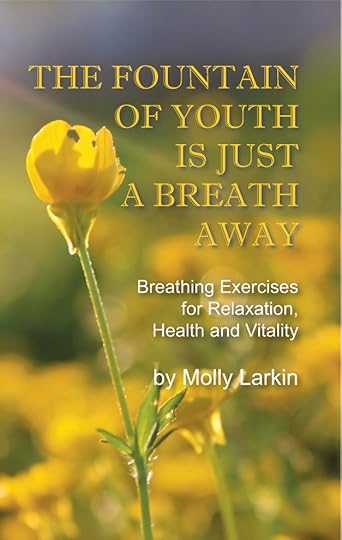
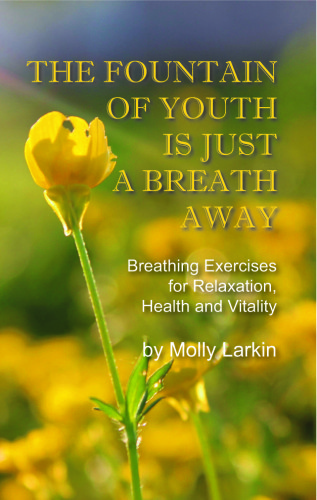 I’m delighted to announce I have a new book out and the e-book is FREE on Amazon today and tomorrow. [Friday December 11 and Sunday December 12].
I’m delighted to announce I have a new book out and the e-book is FREE on Amazon today and tomorrow. [Friday December 11 and Sunday December 12].
The Fountain of Youth Is Just a Breath Away; Breathing Exercises for Relaxation, Health and Vitality.
Inside you will find:
research on why good respiratory capacity is the key to healthy longevity
Steps to calm the mind, reduce stress and balance emotions
how to enhance your spiritual practice
Here are excerpts from some of the 5-star Amazon reviews:
“a remarkable primer on a subject that seems so basic and yet we are shown here that there is much to be known”
“useful, informative and inspiring“
“a powerful little book”
“highly recommended“
It’s also available as a paperback, but unfortunately that’s not free!  However, the paperback would make a great holiday gift for your loved ones!
However, the paperback would make a great holiday gift for your loved ones!
You do NOT need a Kindle to read the e-book. You can read it on any computer or tablet by downloading the FREE Kindle App software .
Don’t like to read ebooks? Get the paperback here.
The latest research is showing that deepening our breath can have profound effects on our well-being, as discussed in this article from the November 16, 2015 issue of Time Magazine: “Save Your Breath”
Feel free to forward this email to your friends, too! The e-book will only be free today and tomorrow [Friday December 11 and Saturday December 12]. After that it will be $0.99 for a limited time. To your health!
December 2, 2015
“America the Beautiful”???

Have you ever wondered what the Native American perspective is of the song, “America the Beautiful?” Here is your chance to find out.
The song’s original lyrics sing the praises of the natural beauty of this continent, referring to it as wilderness. There is no mention of the original inhabitants.
My Native American friend, songwriter Tia Shawnté, wrote “Native Son” in 1990 for Mother Earth, set to the melody of “America the Beautiful.’
She has performed the song across the United States and the mayor of Austin, Texas declared February 4 as Tia Shawnté Day. She has just released a music video of the song, which you can watch below.
From the video notes on YouTube: “Native Son” is a music video tribute to Mother Earth, told from a Native American perspective.
Tia Shawnté is the creator of “Native Son” and vocalist. Tia is Native American. Her grandmother was an original enrollee of the Chickasaw tribe.
Tia’s mother was half-Chickasaw and half-English and was not allowed to learn her native language in the boarding schools she attended.
Tia created “Native Son” while she was living in Nashville, where a large corporation was going to build a landfill on American Indian burial sites. Tia was greatly saddened and led to write Native Son as a Native American and environmental plea for justice.
November 19, 2015
“What is right with you?”

 Has anyone ever asked you that? “What is right with you?”
Has anyone ever asked you that? “What is right with you?”
No one’s ever asked me that, but I certainly recall being asked, “what is wrong with you?” by parents, teachers and employers. I’m sure we all have.
All too often we, and others, focus on what is wrong with us. But there is more right than wrong with all of us.
Just as there is more that is right in the world than is wrong in the world.
People complain that there is only bad news reported in newspapers and the evening news. Well, the good news is that these events are out of the ordinary; that’s why it’s news!
The truth is that planet earth and everything on it is part of an amazing Creation, and we are each magnificent beings of light. Spiritual beings learning to be human.
We forget that a lot.
For some reason we seem to be trained to look for what is wrong.
I would say that 95% of my first-time clients ask, at the end of the healing session, “what did you pick up? What do you think is wrong with me?”
Meaning, they’re hoping for a clairvoyant reading that will tell them the problems I found.
I give everyone the same answer:
“My job as a healing practitioner is to see you as well. I am tuning into the highest vibration of healing energy that I can, and directing it towards you for your own well-being. I visualize you as whole, healthy and well. That is my job and the best way I can serve you. I’m not looking for anything to be wrong.”
In the same way, if someone gives us 9 compliments and one piece of constructive criticism, what do we tend to focus on? The one piece of criticism, no matter how kindly it was phrased.
Why is that?
According to research, the brain processes positive and negative information in different hemispheres of the brain. Negative emotions often involve more thinking, and the information is therefore processed more thoroughly than positive information. As a result, negative emotions are stored in long-term memory quickly.
Positive experiences have to be focused on for more than 12 seconds in order to be stored in long-term memory.
There is also a tendency to see people who say negative things as smarter, so we give what they say more weight.
One study revealed there are more negative emotional words [62%] in the English dictionary than positive [32%].
Of course, there is an evolutionary reason for this, as early humans had to be aware of and avoid danger as a survival skill.
But I believe we can be aware without being focused on the negative. And we may have to work a bit more to increase our focus on the positive.
How to focus on what is right with you
Writer Alina Tugent has a “kudos file” where she keeps all the praise she receives, letters of recommendation, etc., along with letters and emails from friends that make her feel particularly good.
Hang out with friends who make you feel good about yourself and give you positive feedback. Never hang out with people who gossip and speak negatively of others. As much as I wouldn’t have wanted to admit it at the time, my mother was right when she admonished, “birds of a feather flock together.”
I personally focus on posting uplifting quotes on Facebook and Twitter. Going back over my posts can lift me up on a down day. My e-book of inspiring quotes does the same thing.
In fact, positive statements and photos are so important to me on social media that when I get a friend request on Facebook, before accepting I look at the kinds of things that person posts. If it’s not generally positive, I don’t accept their request.
Since the brain processes negative information longer than positive, spend more time on the positive to give it equal billing. At least 12 seconds, as described above.
If you do need to critique someone, phrase it constructively and sparingly. In fact, ask yourself if it really needs to be said at all. Remember the age-old wisdom that before you speak, ask yourself three questions: “Is it true? Is it kind? Is it necessary?” You need to be able to answer “yes” to all three before speaking.
Have a daily gratitude practice. First thing every morning, and last thing every night state at least five things you’re grateful for.
Focus on your wins and acknowledge yourself for them. That means you will be focusing on “what is right with you.”
Is it human nature to focus on the negative? Some scientists say it is. But I say we are in charge of our perspective and the world and can choose to focus on the positive. And we can choose to create the reality we want to live in.
If you practice the suggestions above, everyone will be noticing what is right with you, not the least of which is being happier and making the world a better place.
Why not give it a try and see how right you feel?
“When I was 5 years old, my mother always told me that happiness was the key to life. When I went to school, they asked me what I wanted to be when I grew up. I wrote down happy. They told me I didn’t understand the assignment, and I told them they didn’t understand life.” ~John Lennon
November 4, 2015
What eagles can teach us about Courtship

 There is always much to be learned from the animal world, even about courtship . . . and even from eagles.
There is always much to be learned from the animal world, even about courtship . . . and even from eagles.
I myself made many bad relationship choices in my youth; I always seemed to go for flash and no substance in men. And part of that came from not valuing myself enough.
How many of us settle for less than we deserve, rather than be courageous enough to be on our own? I believe it’s a common issue among both men and women.
Thankfully, I eventually matured and learned that not wanting to be alone was a poor relationship standard. Once I learned to respect and value myself, I no longer made those poor choices.
I believe learning to value ourselves, just as we are, is one of the most important, character-building things we can do for ourselves.
So I really enjoyed reading the following two teachings from Native American elders about how to choose a mate.
High standards indeed! And we can all [both men and women] learn a valuable lesson from it.
” … It amazes me that in the animal world, the female of every species chooses the fastest runner, the best hunter, the strongest fighter for her mate. Yet a woman, who is supposed to be Creator’s finest achievement, often will lay down with any and sometimes every man who comes her way. If anything is going to change for the better, we women must lead the way to higher moral ground. We have to begin teaching our daughters and sons that they have great worth and great responsibility.” Navajo elder
HOW THE FEMALE EAGLE CHOOSES HER MATE
(As told by the Wintu Tribal Elders of California)
When it comes time for the female Eagle to choose her mate, she prepares herself for many suitors. And many come before her.
She looks them over quite well and then picks one to fly with for awhile. If she likes the way he flies she finds a small stick, picks it up and flies high with it.
At some point she will drop the stick to see if the male can catch it. If he does, then she finds a larger stick and flies with it much higher this time.
Each time the male catches the sticks, she continues to pick up larger and larger sticks.
When she finds the largest, heaviest stick that she herself can carry, the stick is at this point almost the size of a small log! But she can still fly very high with this large stick.
At any time in this process, if the male fails to catch the stick, she flies away from him as her signal that the test is now over.
She begins her search all over again.
And when she again finds a male she is interested in, she starts testing him in the exact same way.
And she will continue this “testing” until she finds the male Eagle who can catch all the sticks. And when she does, she chooses him, and will mate with him for life.
One of the reasons for this test is that at some point they will build a nest together high up and will then have their Eaglettes.
When the babies begin to learn to fly, they sometimes fall instead. It is then that the male must catch his young. And he does!
The female Eagle and their Eaglettes have depended on him to be strong for them.
Just as we Native women and children need to depend upon our Native men.
So what I would like to offer to you my friends is this:
Sisters, how well do you “test” your suitors before you allow them into your life?
And my Brothers, how well have you caught the “sticks” for your women and your children?
Whatever our past has been like, if we need to change, let’s do so now together.
Our children are counting on us to make these good choices for them and for their children.
Aho!… All My Relations.





